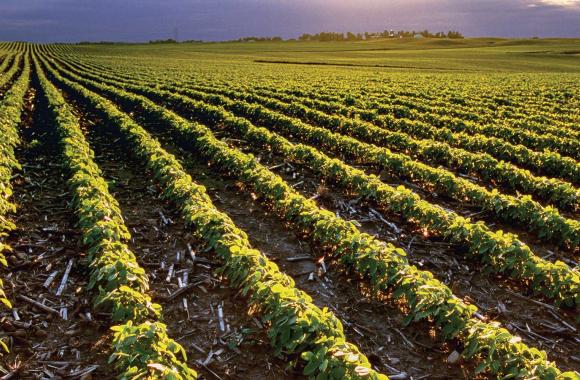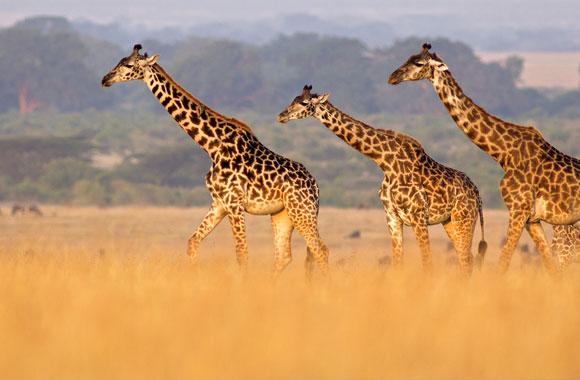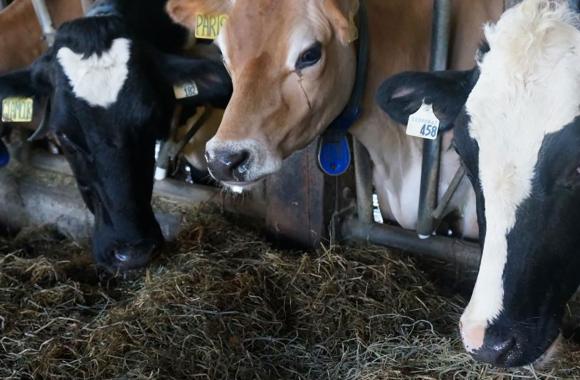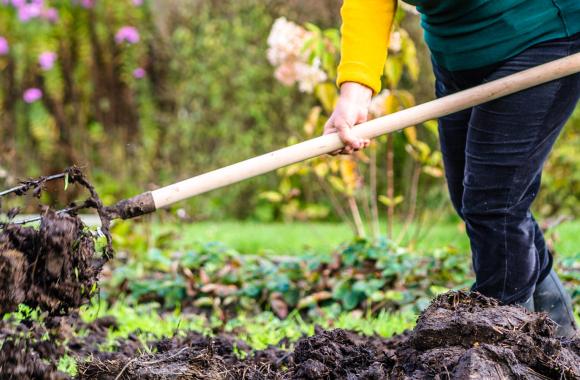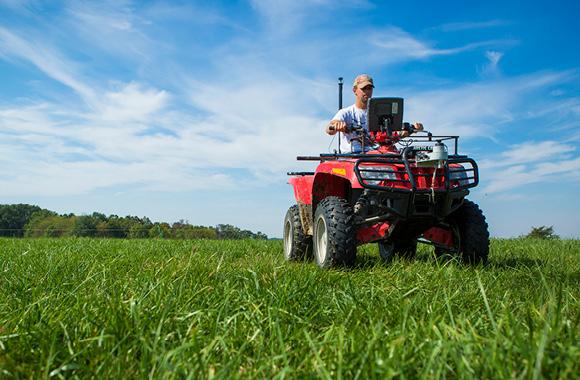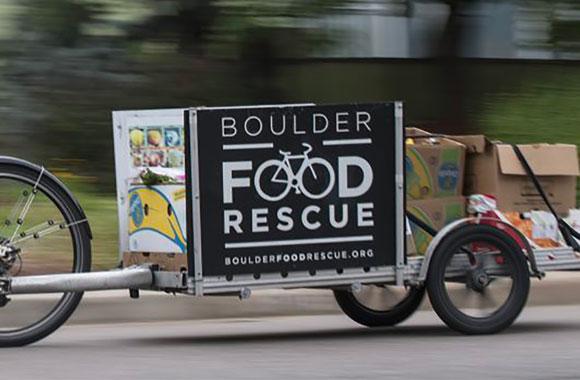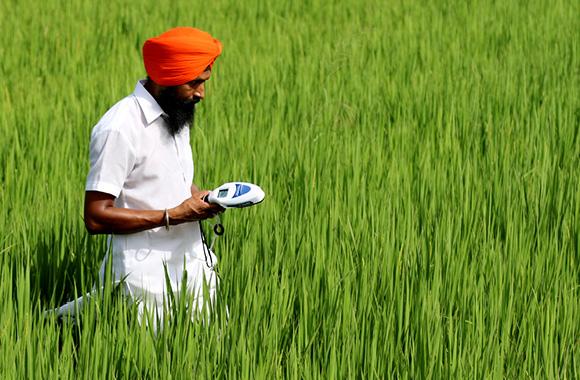Peatland Protection and Rewetting
Peatlands hold vast amounts of carbon. Forestry, farming, fire, and fuel extraction release carbon and reduce peatlands’ ability to store more. Protection and rewetting can reduce emissions while supporting peatlands’ role as carbon sinks.
Reduced/Sequestered
2020–2050
To Implement
Impact
If we increase the total area of protected or rewetted peatlands from 8.84 million hectares to 302.69–491.21 million hectares, we can avoid some 25.40–40.27 gigatons of carbon dioxide equivalent emissions. We don’t project financials because they are not incurred at the landholder level.
Introduction
Peat is a thick, mucky substance made up of dead and decomposing plant matter. It develops over hundreds or thousands of years, as wetland vegetation slowly decays.
Although peatlands cover just 3 percent of Earth’s land area, they are second only to oceans in the amount of carbon they store—twice that held by the world’s forests, at an estimated 500 to 600 gigatons. Unlike most terrestrial ecosystems, peatlands do not reach saturation, and continue sequestering carbon in soil organic matter for centuries or millennia.
Peatlands are being degraded for agricultural, horticultural, forest, fuel, and infrastructure and by fire at a rate of 0.4 million hectares per year. Moreover, peat volume is decreasing by 20 cubic kilometers per year. Peatland degradation results in nearly 3 gigatons of carbon dioxide equivalent emissions per year, equivalent to more than 10 percent of global fossil fuel emissions (Biancali and Avagyan, 2014). An estimated 15 percent of the world’s peatlands have been degraded so far, with nearly 50 percent of that for agricultural land use. The rate is expected to increase in the future unless land management practices and peatland development plans are changed and reconsidered.
Project Drawdown’s Peatland Protection and Rewetting solution focuses on reducing peatland degradation. safeguarding carbon sinks, and restoring and protecting currently degraded peatlands. This solution replaces the destruction of peatlands.
Luckily, most of the world’s peatlands are intact. Protecting these peatlands by preserving land and preventing fire offers a prime opportunity to reduce greenhouse gas concentrations in the atmosphere. Though not as effective as preventing degradation, restoring drained and damaged peatlands also is essential.
Methodology
Total Land Area
To evaluate the extent to which a Food, Agriculture, and Land Use sector solution can reduce greenhouse gas emissions and sequester carbon, we need to identify the total land area available for that solution in millions of hectares. To avoid double counting, we use an integration model that allocates land area among all Food, Agriculture, and Land Use sector solutions. This involves two steps. First, we classify the global land area into agro-ecological zones (AEZs) based on the land cover, soil quality and slope and assign AEZs to different thermal moisture regimes. We then classify the AEZs into “degraded” and “nondegraded.” Finally, we allocate the solutions to AEZs, with the solution most suited to a given AEZ or sets of AEZs assigned first, followed by the second-most-suited solution, and so on. Because it’s hard to predict future changes, we assume the total land area remains constant.
We allocate 464 million hectares for peatland protection and 62 million hectares for peatland restoration. We estimate current adoption (defined as the amount of functional demand supplied in 2018) at 8.84 million hectares for protection (Juffe-Bignoli et al., 2014) and 0 for restoration.
Adoption Scenarios
For peatland protection, we projected future adoption based on 10 custom adoption scenarios. Some of them are based on the yearly increases resulting from the historical evolution of Ramsar sites categories “forested” and “nonforested peatlands” (with management plans) combined with the degradation rate in the model and an alternative one based on the New York Declaration on Forests. Other scenarios are more aggressive. Given the small area of peatland and the high urgency, several scenarios emphasized peak adoption by 2030.
For peatland restoration, we developed five custom adoption scenarios using national peatland restoration commitments.
We calculated impacts of increased adoption of peatlands from 2020 to 2050 by comparing two growth scenarios with a reference scenario in which the market share was fixed at current levels.
- Scenario 1: 302.69 million hectares of peatlands are protected or rewetted (59 percent of the total land area).
- Scenario 2: 491.21 million hectares of peatlands are protected or rewetted (95 percent of the total land area).
Protection of unprotected peatlands was limited by the continuous annual rate of peatland degradation (0.51 percent) that would occur even under the most aggressive adoption scenarios.
Emissions and Sequestration Model
We set peatland protection sequestration rates at 0.51 metric tons of carbon per hectare per year, based on 86 data points from 16 sources. We set emissions reductions at 38.58 metric tons of carbon dioxide equivalent per hectare per year, based on meta-analysis of 131 data points from 42 sources. We set nitrous oxide and methane emission reductions at 2.25 and 3.22 metric tons of carbon dioxide equivalent per hectare per year, respectively. We based the nitrous oxide value on 40 data points from nine sources, and the methane value on 24 data points from 10 sources.
We set peatland restoration emission reductions at 16.5 metric tons of carbon dioxide equivalent per hectare per year based on 15 data points from six sources.
Financial Model
This study did not model financials, because costs aren’t necessarily borne by the landowner or land manager.
Integration
Drawdown’s Agro-Ecological Zone model allocates current and projected adoption of solutions to the planet’s forest, grassland, rainfed cropland, and irrigated cropland areas. Peatland protection is allocated on nondegraded forest, grassland, and croplands. Peatland protection is the top priority for all of these lands. Peatland restoration, however, is allocated only on degraded forest. It is the first-priority solution there.
Results
The emissions impact of Scenario 1 is 25.40 gigatons of carbon dioxide equivalent by 2050. The emissions impact of Scenario 2 is 40.27 gigatons of carbon dioxide equivalent by 2050. Financial impacts are not modeled.
Discussion
Benchmarks
IPCC (2014) estimated current annual emissions from degraded peatlands at 1.0 gigatons of carbon dioxide equivalent per year. This will surely increase as degradation continues. Griscom et al. (2017) calculated emissions of 0.45–0.75 gigatons of carbon dioxide equivalent per year in 2030. Our model calculates an emissions reduction of 0.52–0.82 gigatons of carbon dioxide equivalent per year by 2030. This study is within range of the benchmarks, because the degraded area will continue to grow in business-as-usual scenarios and emissions will continue from degraded peatlands for decades or longer, given the immense size of the stocks.
Limitations
It would be useful to project peatland restoration as well as protection and to project financials at the government or nongovernmental organization level is also recommended.
Conclusions
The extremely high carbon stocks of peatlands, combined with peatlands’ relatively tiny global extent, indicate that their protection should be an extremely high priority for climate mitigation.
References
Biancalani, R., Avagyan, A., & Food and Agriculture Organization of the United Nations (Eds.). (2014). Towards climate-responsible peatlands management. Rome: Food and Agriculture Organization of the United Nations (FAO).
Griscolm, B. W., Adams, J., Ellis, P. W., Lomax, G., Miteva, D. A., Schlesinger, W. H., Shock, D., Siikamäki, J. V., Smith, P., Woodbury, P., Zganjar, C., Blackman, A., Campari, J., Conant, R. T., Delgado, C., Elias, P., Gopalakrishna, T., Hamsik, M. R., Herrero, M., Kiesecker, J., Landis, E., Laestadius, L., Leavitt, S. M., Minnemeyer, S., Polasky, S., Potapov, P., Putz, F. E., Sanderman, G., Silvius, M., Wollenberg, E., Fargione, J. (2017). Natural Climate Solutions. Proceedings of the National Academy of Sciences, 114(44) 11645-11650. DOI: 10.1073/pnas.1710465114
Intergovernmental Panel on Climate Change (IPCC) (2014). AR5 Synthesis Report: Climate Change 2014. IPCC. Accessed at: https://www.ipcc.ch/report/ar5/syr/
Leifeld, J., Alewell, C., Bader, C., Krüger, J. P., Muller, C. W., Sommer, M., …Szidat, S. (2018). Pyrogenic Carbon Contributes Substantially to Carbon Storage in Intact and Degraded Northern Peatlands. Land Degradation & Development, 29(7), 2082-2091. https://doil.org/10.1002/ldr.2812
What You Can Do
Find out whether peatland protection part of the sustainability plan of the company that produces your favorite manufactured food item. If not, reach out or use social media to encourage a change.
Make an earmarked contribution to an environmental organization that's working to advance equitable and just protection of peatlands.
- Expand your knowledge by exploring another Drawdown solution.
Co-benefits
Peatlands soak up floodwaters, protecting downstream communities from flooding.



